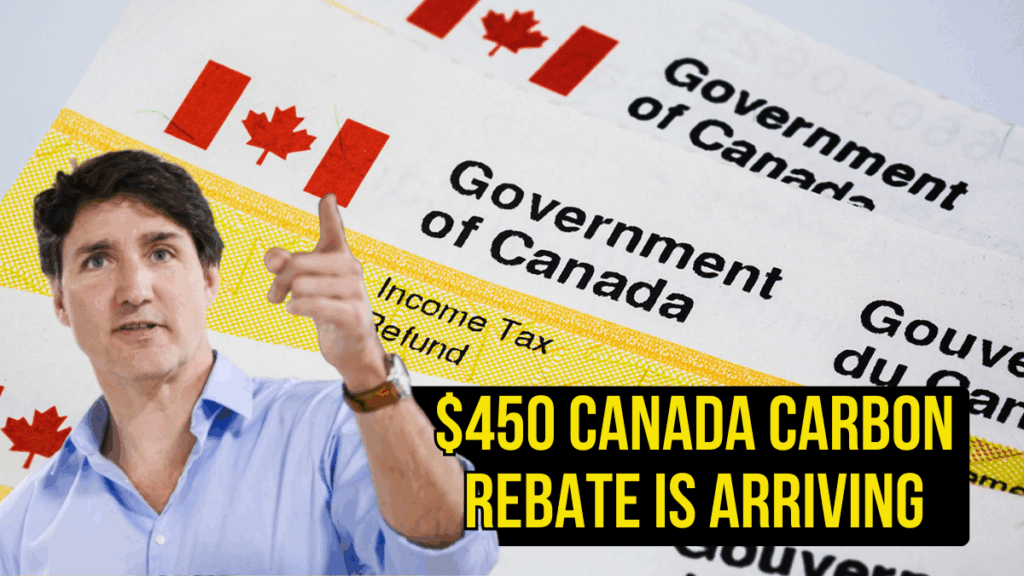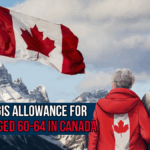The Canadian federal government has confirmed that the Canada Carbon Rebate (CCR) will be delivered next week, with eligible households receiving up to $450. This tax-free payment aims to offset the higher cost of fuel, heating, and transportation caused by carbon pricing, ensuring that families particularly low- and middle-income households receive relief.

This guide explains who qualifies, how to claim, when the payments arrive, and the major changes announced for 2025.
What Is the Canada Carbon Rebate?
The Canada Carbon Rebate (CCR) is a quarterly tax-free cash payment for residents in provinces where the federal carbon pollution pricing system applies.
- Originally called the Climate Action Incentive (CAI) from 2019–2020.
- Renamed Climate Action Incentive Payment (CAIP) from 2021–2023.
- Officially rebranded in 2024 as the Canada Carbon Rebate.
The rebate is designed to return carbon tax revenues collected from fuel charges back to Canadians. Since rural households face higher fuel costs, a rural supplement is also included.
Most families, especially low- and middle-income households, receive more back in rebates than they pay in carbon-related costs, making this a vital support program.
Quick Summary of Canada Carbon Rebate September 2025
Aspect |
Details |
|---|---|
Payment Name |
Canada Carbon Rebate (CCR) |
Payment Month |
September 2025 (arriving next week) |
Maximum Amount |
Up to $450 (varies by province and family size) |
Issued By |
Canada Revenue Agency (CRA) |
Frequency |
Quarterly (every 3 months) |
Eligibility |
Residents of provinces under federal carbon pricing (ON, AB, SK, MB, NS, NB, PEI, NL) |
Application Needed? |
No, automatic if taxes are filed |
Official Website |
Eligibility for the $450 Canada Carbon Rebate
To qualify for the September 2025 rebate, you must meet the following criteria:
- Residency
- You must be a resident of Alberta, Manitoba, Saskatchewan, Ontario, Nova Scotia, New Brunswick, Newfoundland and Labrador, or Prince Edward Island on the first day of the payment month.
- Age Requirement
- Be at least 19 years old before the CRA issues the payment.
- If under 19, you may still qualify if you:
- Have (or had) a spouse or common-law partner, OR
- Are a parent and live with your child.
- Tax Filing
- You must have filed your 2024 income tax return. Even if you had no income, filing is mandatory to receive the payment.
- Children Eligibility
- Each eligible child is included in the calculation if they:
- Are under 19 years of age.
- Live with you.
- Are dependent on you or your spouse/common-law partner.
- In cases of shared custody, each parent receives half of the child’s rebate amount.
- Each eligible child is included in the calculation if they:
How Much Will You Receive?
Rebate amounts depend on province of residence and family size. For September 2025, estimates are as follows for a family of four:
Province |
Rebate Amount |
|---|---|
Alberta |
$450 |
Saskatchewan |
$340 |
Manitoba |
$300 |
Ontario |
$280 |
Nova Scotia |
$248 |
New Brunswick |
$240 |
Newfoundland & Labrador |
$280 |
Prince Edward Island |
$240 |
- Rural Supplement: Households in rural communities get an extra 10–20% added to their rebate.
- Payments are quarterly, so the annual total is significantly higher.
Payment Schedule for September 2025
The Canada Revenue Agency (CRA) has announced the following timeline:
- Payment Processing Begins: September 10, 2025
- Direct Deposits: September 14, 2025
- Paper Cheques (if no direct deposit): September 17–24, 2025
Direct deposit is faster and strongly recommended.
How to Claim the Canada Carbon Rebate
The best part of the CCR is that you do not need to apply separately. Payments are automatic, provided you have filed your taxes.
Steps to Ensure You Receive Payment:
- File Your Tax Return – File your 2024 income tax return before the deadline.
- Update Personal Information – Make sure CRA has your bank account, marital status, and address up-to-date.
- Set Up Direct Deposit – Register your direct deposit details in your CRA account for faster payment.
- Check CRA My Account – Log in to view rebate details under the “Benefits and Credits” section.
Major Changes for 2025
- Rural Supplement Doubled – Increased from 10% to 20% to reflect higher rural fuel dependency.
- Eligibility Rebased on 2016 Census Data – Ensures more households qualify compared to older data.
- Retroactive Payments – Any shortfalls from April and September will be adjusted and paid in October 2025.
- Simplified Payment System – CRA ensures rebates are delivered directly with income tax data, reducing errors.
Why This Rebate Matters
The Canada Carbon Rebate is not just financial relief—it’s also an important climate policy. By redistributing carbon pricing revenues directly to families:
- Households receive fair compensation for higher fuel costs.
- It encourages environmentally responsible behavior without penalizing low-income families.
- Rural and suburban families get extra support due to limited public transport options.
FAQs on $450 Canada Carbon Rebate
1. Do I need to apply for the CCR?
No. It is automatic if you file your taxes.
2. When is the next payment?
September 14, 2025 (direct deposit). Cheques arrive between September 17–24, 2025.
3. Can permanent residents receive the rebate?
Yes, provided they reside in an eligible province and meet the other requirements.
4. What if I move to another province?
Your rebate is based on your province of residence on the first day of the payment month.
5. Will children be included in the payment?
Yes, each eligible child is included in the calculation. Shared custody results in split payments.
Conclusion
The $450 Canada Carbon Rebate for September 2025 offers much-needed relief to households coping with the rising costs of fuel and energy. With automatic deposits, rural top-ups, and enhanced eligibility, the rebate remains a critical tool for supporting Canadian families while reinforcing climate goals.
Make sure your taxes are filed, your CRA details are updated, and direct deposit is enabled to receive your payment on time.
For the latest updates, visit the official Government of Canada CCR page.
For More Information Click HERE




